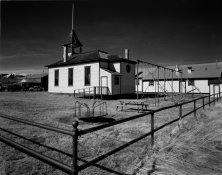It is, in the end, all about the look you want. A number of years ago I dove deep into high-acutance developers to see what I liked and what affect they might have on the final image (in terms of what the public would truly perceive) -- FX-1, 2, 37, 39, dilute Rodinal, dilute Xtol, a revisit of the Neofin Blue of my youth, Pyro...
In the end, as Gerald notes, the acutance affects were only really meaningful on 35mm at a sizable enlargement. For me, though, 35mm work is documentary and there are far more important factors than acutance to consider. If you shoot landscapes with a very good 35mm camera and slow film, these devs can help get a pleasing 16X20 or so. With larger formats it comes down to the satisfaction of the creator because the public will not look at a photograph for that fussy of technical quality. They look at content and only notice technique when it breaks the spell, when it gets in the way.
What lingered for me from that round of experimentation was that there were certain developer/film combinations that delivered a tonality I really love. That's why I use them now, and often in rule-breaking manner.
And since I like "show don't tell" here's a barely interesting frame from a recent round of Delta 100 in 2014 Neofin Blue, rotary development using Tetenal's 3-second agitation timing. It's a negative scan, meaning less delicate gradation, of course. 90mm f/6.8 Angulon with a red 29 filter.




